
JANUARY 28, 2016 — We are at the Massachusetts Water Works Association membership meeting at Leicester Country Club today. In attendance are Karen Gracey, P.E., Vice President and Paul Howard, P.E., Senior Vice President. We’re here to talk water!

JANUARY 28, 2016 — We are at the Massachusetts Water Works Association membership meeting at Leicester Country Club today. In attendance are Karen Gracey, P.E., Vice President and Paul Howard, P.E., Senior Vice President. We’re here to talk water!
Winter has descended in full force, and with it comes blizzards, nor’easters, and every other type of snowstorm. It also brings the potential for some serious water pollution. While managing the ever-growing blanket of snow and ice this winter, be sure to keep these tips in mind in order to protect our water supply and environment.
 Shovel early and often. While this may not seem like much of a pollution deterrent, it actually makes a huge difference. Removing the bulk of snow before it is allowed to freeze greatly reduces the amount of deicing products needing to be applied. Consider utilizing a garden hoe to remove that last pesky layer of ice.
Shovel early and often. While this may not seem like much of a pollution deterrent, it actually makes a huge difference. Removing the bulk of snow before it is allowed to freeze greatly reduces the amount of deicing products needing to be applied. Consider utilizing a garden hoe to remove that last pesky layer of ice. Use only the smallest amounts of sand required for traction control. While admittedly a better option than deicing products, sand has the potential to cause environmental damage as well. Sand can clog storm drains, causing flooding. It can also enter surface waters, clouding the water, burying the ocean floor, and filling in habitats. Due to these environmental concerns, sand should be used only sparingly on icy surfaces and should be swept up promptly at the first sign of spring. Sawdust is an alternative option for traction control that causes less pollution. Still, it should also be swept promptly in the spring.
Use only the smallest amounts of sand required for traction control. While admittedly a better option than deicing products, sand has the potential to cause environmental damage as well. Sand can clog storm drains, causing flooding. It can also enter surface waters, clouding the water, burying the ocean floor, and filling in habitats. Due to these environmental concerns, sand should be used only sparingly on icy surfaces and should be swept up promptly at the first sign of spring. Sawdust is an alternative option for traction control that causes less pollution. Still, it should also be swept promptly in the spring. Choose a commercial car wash facility over washing your car at home. While those warm winter days may entice you to break out the garden hose and bucket, the residual water has nowhere to go but down the driveway, particularly when there is a lot of snow cover. Bringing with it soap, dirt, and pollutants along the way, this water enters storm drains and waterways untreated. The Clean Water Act requires that car washes to pipe their used wash water directly to water treatment plants or into state-approved drainage facilities specifically designed to protect the environment. In addition, a commercial car wash uses about half the water used during a home wash. The negligible cost of a commercial car wash is well worth the benefit to the environment.
Choose a commercial car wash facility over washing your car at home. While those warm winter days may entice you to break out the garden hose and bucket, the residual water has nowhere to go but down the driveway, particularly when there is a lot of snow cover. Bringing with it soap, dirt, and pollutants along the way, this water enters storm drains and waterways untreated. The Clean Water Act requires that car washes to pipe their used wash water directly to water treatment plants or into state-approved drainage facilities specifically designed to protect the environment. In addition, a commercial car wash uses about half the water used during a home wash. The negligible cost of a commercial car wash is well worth the benefit to the environment.Municipal wastewater treatment requires an enormous amount of energy, which comes at a high cost, both fiscally and environmentally. Energy costs continue to rise while municipal budgets shrink, creating unsustainable operating costs. Indeed, energy efficiency for wastewater utilities is no longer a choice, but a necessity. The good news is that there are many relatively inexpensive and easily implemented ways of controlling energy costs at wastewater treatment facilities, and the payback period can easily justify the investment.
 The first step towards making an informed decision about energy efficiency at a wastewater treatment facility is an energy audit. A quality wastewater energy audit takes into account energy efficient equipment replacement, operational changes, and process control, and includes conducting on-site observations, testing wastewater systems and equipment, and monitoring power costs and usage. The result of a well executed energy audit is a justifiable plan of action that provides optimal energy savings, a true road map to energy efficiency.
The first step towards making an informed decision about energy efficiency at a wastewater treatment facility is an energy audit. A quality wastewater energy audit takes into account energy efficient equipment replacement, operational changes, and process control, and includes conducting on-site observations, testing wastewater systems and equipment, and monitoring power costs and usage. The result of a well executed energy audit is a justifiable plan of action that provides optimal energy savings, a true road map to energy efficiency.
Once the audit results are in, a number of changes, both large and small, can be made to save on energy costs. Wastewater treatment plants can conserve energy in many ways, from changing light bulbs and upgrading motors to installing combined heat and power systems and other renewable energy technologies. Some energy efficient options are highlighted below:
Variable-Frequency Drives
Variable-frequency drives (VFDs) modify the speed of electric motors by adjusting the amount of power being delivered. These precise drives adjust motor speed to match the exact energy demand needed at any given time. By controlling the amount of power used, VFDs provide significant cost savings to wastewater treatment facilities and to the environment. A good application for VFDs is the blowers on the aeration system. Dissolved oxygen probes installed in the aeration basin can provide real time measurement of oxygen concentration in the wastewater. This information can be sent to the VFDs to speed up or slow down the blowers to provide only the oxygen needed for the biological process to thrive. The result — significant savings and happy microbes.
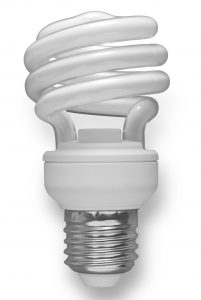 Heating, Cooling, and Ventilation Systems
Heating, Cooling, and Ventilation Systems
Updated HVAC systems that incorporate energy-efficient technologies provide operational savings and reduce energy consumption. Like VFDs, the most cost-effective time to upgrade these systems is when they are already due for replacement.
Energy Efficient Lighting
Installing energy efficient lights and lighting systems is one of the easiest ways to increase energy efficiency at wastewater utilities. Replacing burnt-out lights with fluorescents or LEDs eases into the transition and makes it affordable. Dimmers, motion sensors, and time switches can be installed to save even more energy — and money.
Electrical Load Management
Strategies such as improving the power factors of motors, reducing peak demand, and shifting to off-peak hours all provide significant savings for wastewater treatment facilities.
Biosolids Management
Biosolids, or the solid organic matter that is a by-product of the wastewater treatment process, should be managed sustainably in order to reduce both environmental and economic costs. Sustainable biosolids management incorporates efficient methods of treatment, transport, and end-use. By implementing a sustainable biosolids management plan, such as pretreatment for minimizing sludge treatment and recycling/reuse of residual sludge, municipalities can reduce greenhouse gases as well as trucking miles, thereby saving money and generating energy.
Operational Management
 While updating equipment is a great way to increase energy efficiency, even more important is training managers and staff to think and operate efficiently. Educating wastewater utilities’ staff on the importance of energy conservation and on best practices yields significant savings for wastewater utilities and the environment.
While updating equipment is a great way to increase energy efficiency, even more important is training managers and staff to think and operate efficiently. Educating wastewater utilities’ staff on the importance of energy conservation and on best practices yields significant savings for wastewater utilities and the environment.
Inflow and Infiltration Management
Inflow and infiltration (I/I) in a wastewater facility’s collection system results in significantly higher costs to utilities. Increased flow requires additional processing, and results in higher demand to lift station pumps. In addition, systems are at an increased risk of becoming overloaded. Controlling I/I is a key step to becoming a more efficient wastewater treatment facility.
Combined Heat and Power
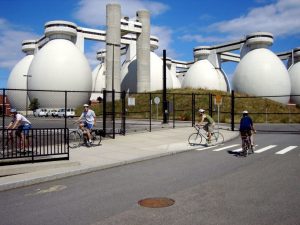
Combined heat and power (CHP), or cogeneration, is a clean, efficient, and sustainable approach to generating power from a single fuel source. Wastewater treatment plants with anaerobic digesters installed produce methane gas as a by-product of digestion. Traditionally, these facilities convert the methane to carbon dioxide and release it into the atmosphere. However, a cleaner and more efficient way of managing methane is to actually utilize it as an energy source. CHP systems are designed to meet the specific energy needs of wastewater treatment plants, and can significantly enhance operational efficiency while decreasing energy costs. In addition, CHP systems are beneficial to the environment in that they reduce greenhouse gas emissions, which contribute to climate change, which contributes to water scarcity and degradation — a damaging cycle.
In Conclusion
Energy efficiency in wastewater treatment operations is certainly the wave of the future. Because of increased loads and decreased budgets, municipal wastewater treatment plants are finding it necessary to implement cost-effective solutions in order to operate sustainably. Implementing an energy audit and incorporating energy efficient strategies into day-to-day operations at wastewater treatment facilities will provide significant economic and environmental benefits, and provide a safe, clean future for generations to come.
The crisis of our diminishing water resources is just as severe any wartime crisis we have ever faced. —Jim Wright, U.S. Representative, The Coming Water Famine, 1966
 Water is life. No truer words were ever spoken, for without freshwater, life simply cannot exist. The first civilization in recorded history settled in Mesopotamia, or the “cradle of civilization” which is now modern day Iraq, Iran, Syria, Kuwait, and Turkey, due to its location between the Tigris and Euphrates Rivers. And since the dawn of history, water conflict has erupted when supply has become scarce.
Water is life. No truer words were ever spoken, for without freshwater, life simply cannot exist. The first civilization in recorded history settled in Mesopotamia, or the “cradle of civilization” which is now modern day Iraq, Iran, Syria, Kuwait, and Turkey, due to its location between the Tigris and Euphrates Rivers. And since the dawn of history, water conflict has erupted when supply has become scarce.
 The first recorded water conflict took place in the “Gu’edena” region, known as the “edge of paradise.” King Urlama, who ruled Lagash from 2450 to 2400 BC, diverted regional water to boundary canals, which dried up boundary ditches and deprived Umma of water. Furthering his father’s work, King Urlama’s son cut off the water supply to Girsu, a city in Umma. Since this first recorded water war, water conflict has erupted regularly on planet Earth, with a high percentage of the conflict occurring in the Middle East.
The first recorded water conflict took place in the “Gu’edena” region, known as the “edge of paradise.” King Urlama, who ruled Lagash from 2450 to 2400 BC, diverted regional water to boundary canals, which dried up boundary ditches and deprived Umma of water. Furthering his father’s work, King Urlama’s son cut off the water supply to Girsu, a city in Umma. Since this first recorded water war, water conflict has erupted regularly on planet Earth, with a high percentage of the conflict occurring in the Middle East.
Prior to the mid-twentieth century, the vast majority of water conflict came about as a result of a pre-existing war; that is, water was diverted or targeted as a military tactic. However, since the 1950s, targeted disputes over water access have increased exponentially, which should come as no surprise. After all, global population has nearly tripled in that time, from 2.5 billion in 1950 to 7.3 billion in 2015. And it continues to grow.
At the same time, climate change has begun to wreak havoc on global water supplies. Since 1950, the planet has warmed by approximately 1°, resulting in about 5.7% of the Earth’s total land area shifting toward warmer and drier climate types from 1950–2010. These warmer climates include expansion of arid climate zones and reduction in polar ice caps. And that’s just from one single degree. Experts predict that the earth’s temperature will increase five times that amount during this century alone, and unless we globally commit to taking climate action, at least one-third of the globe will fall into a state of near permanent drought by 2050.
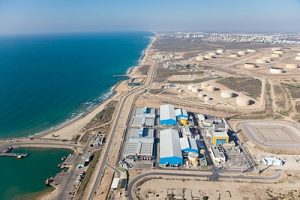
So what is the solution? Fortunately, global populations are taking notice, and nations have begun to work cooperatively towards a sustainable future. At the Paris Climate Conference held in December of 2015, water was of particular focus: the Paris Pact on Water and Adaptation to Climate Change in the Basins of Rivers, Lakes, and Aquifers was signed, and The Paris Call for Actions was officially launched. In addition, individual nations are implementing regulations and guidelines to provide for a more sustainable future. Many nations in the arid Middle East, including Kuwait, Qatar, Saudi Arabia, Israel, and the United Arab Emirates, have embraced desalination as a viable technology for years, and are now looking to reclaimed water to augment their water supply. British Columbia, Canada recently passed The Water Sustainability Act, which allows the government to manage surface water and groundwater as one resource, provide water users with greater certainty regarding their water rights, and establish clear rules about managing water during times of scarcity. The Act, which goes into effect early this year, was enacted to ensure that water stays healthy and secure for future generations of British Columbians.
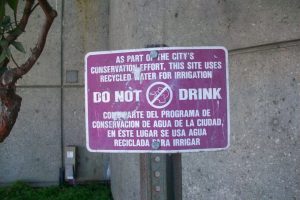
In the United States, water conservation has been brought to the forefront of the public eye, and the EPA has implemented its Sustainable Water Infrastructure program to provide technical support and financial resources to states to increase water and energy efficiency in water, wastewater, and stormwater infrastructure. The goal of the program is to assist water and wastewater facilities in saving water and energy and reducing greenhouse gas emissions. Recycled wastewater is being used to recharge groundwater supplies and to irrigate crops, and the western hemisphere’s largest ocean desalination plant is currently under construction in California. Stormwater is now being viewed as a resource rather than a waste product, with Low Impact Development and sustainable stormwater management practices now commonplace. Engineers are working diligently to innovate energy efficient water conservation technologies, while municipal and governmental entities have been educating the public on the value of water and conservation techniques.
If climate change is allowed to continue uninhibited, people and nations will be forced to compete for water. As is evidenced by the unrest and violence in Syria and the resulting socio-economic devasation, drought and water scarcity exacerbate tensions and contribute to conflict. With increasing population and decreasing supply, there simply won’t be enough water to go around. Even water-rich communities will feel the effects of climate change. While parts of the planet dry up, high latitudes will experience extremely heavy rainfall that increases the level of pollutants, sediment, and nutrients in water, resulting in degraded water quality. Unless climate change is addressed, the global population faces a water crisis that will reach every corner of the globe. As Jean Chrétien, former Canadian prime minister and co-chair of the InterAction Council so eloquently stated,“The future political impact of water scarcity may be devastating. Using water the way we have in the past simply will not sustain humanity in future.”
New England-based consulting engineering firm enhances its client service by combining its Connecticut teams
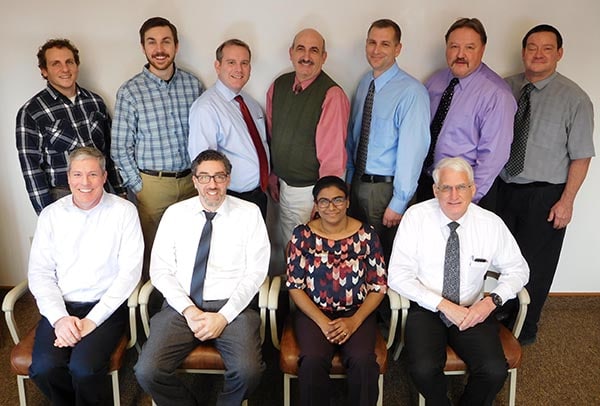
WATERBURY, CT, January 13, 2016 – Tata & Howard, Inc., a leading innovator in water, wastewater, stormwater, and environmental services engineering solutions, announced today that it has consolidated its two Connecticut offices into one centrally-located branch in Waterbury, Connecticut. The consolidation is largely a result of Tata & Howard’s acquisition of Waterbury engineering firm Roald Haestad, Inc. in August of 2014.
“After the acquisition of Roald Haestad, we knew we wanted to combine our two Connecticut offices into one cohesive team to better serve our clients,” said Steve Rupar, P.E., Vice President of Tata & Howard. “Because we also wanted to ensure the satisfaction of our employee-owners and to retain our incredible talent base, we decided to proceed gradually over the course of 2015. The move was finalized at the end of the year.”
Tata & Howard’s Connecticut office provides a full range of engineering services including water and wastewater engineering, dam engineering and inspections, water and energy audits, asset management and business practice evaluations, and pipe condition assessment. Currently, the office is providing engineering services for numerous Connecticut clients including the South Central Connecticut Regional Water Authority (RWA), Aquarion Water Company, and the Cities of Danbury, Norwalk, New Britain, and Meriden.
“The consolidation makes financial sense and also enhances our teamwork – which is one of our corporate values, and what sets us apart from the competition,” added Sal Longo, P.E., Vice President of Tata & Howard. “The move was completed smoothly with no interruptions to our projects or inconvenience to our clients. We were fortunate to retain our valued team members, and we are all looking forward to a successful 2016.”
For questions, please contact Karen L. Gracey, P.E., Vice President, at kgracey@tataandhoward.com.